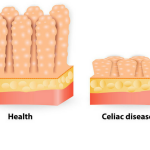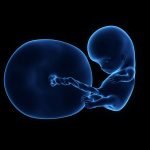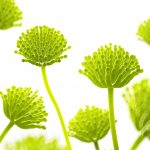Fertility in Primary Care: A Case Study
Naturopathic Perspective
Erin Westaway, ND
Infertility is typically diagnosed after a couple has not been able to conceive or maintain a pregnancy after several months of unprotected, well-timed intercourse. For women under age 35, the diagnosis is typically not given until 12 months of trying to conceive; for women over 35 years of age, the diagnosis is given after 6 months. The difference in time-frame is due to the fact that female ovarian reserve and egg quality decrease with age and that the couple should be offered treatment sooner when she is perceived to be closer to the end of her fertile window. That being said, while advancing age is a risk factor for infertility in women, there is significant variance in ovarian reserve and fecundity of women at a given age within the reproductive lifespan.1
In the United States, it is estimated that approximately 12% of women will seek fertility services at some point in their lifetime.2 While infertility is also estimated at about 12%,2 it is likely that this is an underestimate because not all women who struggle with fertility seek care. As a woman ages, the risk of infertility increases; for those aged 35-39, the risk is estimated at around 15%, and for those aged 40-44, the risk is roughly 16-18%.2 It is assumed that female-factor infertility plays a role in a couple struggling to conceive about 50% of the time.3 Worldwide, newer statistics suggest that 1 in 4 four couples in developing nations struggle with infertility.4
Infertility: Causes & Considerations
Appropriate diagnosis and management of infertility is essential for overall health and well-being of couples struggling with the issue. Infertility can lead to significant psychosocial distress and is associated with increased risk of both anxiety and depression.5 Some causes of infertility can also have significant impacts outside the reproductive tract and should be addressed. For example polycystic ovarian syndrome (PCOS) is associated with a higher risk of diabetes,5 and endometriosis has been associated with higher rates of asthma, autoimmune disease, atopic disease, cardiovascular disease, and ovarian cancer.6
Certain causes of infertility can also be systemic or reside outside the reproductive tract, such as environmental toxicity or hypothyroidism. Exposure to environmental toxins may increase risk of infertility by as much as 40%.7 Hypothyroidism is associated with increased risks of both miscarriage and developmental delays in live births.8 While controversial in the conventional fertility field, there is some evidence suggesting that immune disorders can also cause infertility. Specifically, Crohn’s disease can result in subfertility, which may be partly due to the inflammatory processes involved in the condition and partly due to nutrient deficiencies from malabsorption.9 In one study, women with fewer disease flares who had not required surgical resection and had been off steroidal medication for 3 months prior to conception had better pregnancy outcomes.9
There is a large emphasis in the fertility literature on age-related decreases in ovarian reserve and egg quality. It is typically assumed that early miscarriages, especially in a female over 35 years of age, are due to chromosomal abnormalities that are incompatible with life. It is also assumed that chromosomal abnormalities increase as a result of age itself. There is growing evidence, however, of other factors involved in oocyte function and quality. Mitochondrial function, for example, has now been shown to play a major role in oocyte function and embryological development,10 and exposure to high levels of oxidative stress11 and environmental toxins such as bisphenol A (BPA) have been shown to damage egg quality independent of age.12
Conventional medical approaches to fertility frequently revolve around overriding a hormonal imbalance to force oocyte maturation and/or ovulation, fertilization, and support of implantation. Though these techniques are sometimes necessary, they don’t always address the other systemic processes that may be at play in limiting a couple’s fertility. Couples also may wish to be proactive in optimizing health and fertility prior to conception and/or prior to the 6-12-month period of active trying before they are typically eligible for a conventional fertility workup. Naturopathic care provides an opportunity to optimize systemic conditions that may impair fertility, thereby potentially decreasing the need for more invasive assisted reproductive services, which can be quite costly.
Case Study
Presenting Concerns & Clinical Findings
A 38-year-old patient presented to me in late May of 2014 with a complaint of a burning sensation in her bladder. She also wanted support around fertility. She noted that she and her husband were currently trying to conceive. She had concerns about her age but was not interested in pursuing assisted reproductive technology (ART) if they did not conceive naturally. I had not seen this patient for about a year and had treated her before for her bladder symptoms, which had been diagnosed by her previous practitioner as interstitial cystitis. Her current symptoms were consistent with her prior intermittent symptoms, which had never, through many urinalyses and urine cultures, revealed an infection.
The patient reported that though she had a history of irregular menstrual periods with somewhat short cycles (about 25 days) and would sometimes skip cycles entirely, her periods had been more regular lately. Her last menstrual period was 3 weeks before our visit. She noted that her bladder symptoms flared in the week prior to our visit. Her periods were not usually heavy, and she typically menstruated for 3-5 days at a time. She had never been pregnant and had not recently been on hormonal birth control. She and her husband had been trying to conceive for approximately 3 months, but not using ovulation predictor kits. She did not want to get too stressed about getting pregnant and felt OK if it did or did not happen.
Other relevant history included Crohn’s disease and herpes, both of which were under control with diet, stress management, and some supplements. She reported in this visit that her digestion was doing well and had been for some time. She had a wart on her foot, and applied neem oil topically.
She ate a balanced, gluten-free and dairy-free diet, and had less than 1 alcoholic drink per week. Most of her food was organic, and she avoided plastic containers. She sometimes drank 1 cup of coffee and otherwise typically drank water. She did not notice an increase of symptoms with coffee, and she was avoiding any other known food triggers. Stress was relatively low. She was struggling some with sleep, mostly due to her work schedule, which kept her up late and made it hard to go straight from work to sleep.
Supplements included: L-lysine (1000 mg/day), a multivitamin containing methylated B vitamins and methylated folate, a plant-based enzyme, a probiotic, vitamin D (2000 IU/day), kava (Piper methysticum) tincture (1 dropper 2-3 times/day for the bladder).
The physical exam, including abdominal, cardiac, and lung exams, was unremarkable. A pelvic exam was also unremarkable. Her body mass index (BMI) was within normal limits (WNL). A sample was obtained for a Pap smear, and blood work ordered.
Diagnostic Evaluation
The patient’s symptoms seemed consistent with her history of interstitial cystitis.
To assess her fertility, I balanced her desire for support with her wishes to avoid invasive and hormonal treatment if they did not conceive naturally. We started with a basic lab work-up including CMP, lipids, CBC, ferritin, iron, vitamin D, TIBC, TSH, thyroid antibodies, Day-21 progesterone, and Day-3 FSH and estradiol. Unfortunately, due to a miscommunication, FSH and estradiol were run with the other labs during the luteal phase, making the results less relevant.
Her Pap came back without intraepithelial lesions; however, she was positive for an HPV infection. CMP, CBC, and lipids were all WNL. Ferritin was 33 ng/mL, serum iron was 117 µg/dL, and TIBC was slightly low. TSH was 6.280 µIU/L, and thyroid antibodies were negative. Day-21 progesterone was 2.7 ng/mL. Her 25-hydroxyvitamin D was 37.2 ng/mL. My assessments included low progesterone with potential anovulatory cycles, hypothyroidism, and suboptimal vitamin D, the latter 2 potentially contributing to poor tissue healing (ie, bladder symptoms), and all of which can decrease fertility.8,13-15
Treatment
It seemed important to address the bladder symptoms in the short term while at the same time working on the underlying cause and addressing fertility. Before test results were back, the patient was started on a supplement containing: bitter orange (Citrus aurantium) (25% bioflavonoids and 98% hesperidin), bromelain (3600 MCU/g), Japanese sophora (Sophora japonica) (95% quercetin and 98% rutin), turmeric (rhizome) (Curcuma longa) standardized extract, vitamin A (100% as beta carotene), vitamin C (as ascorbic acid), and zinc (as rice chelate oxide). Quercetin,16 Curcuma longa,17,18 hesperidin,19 rutin,20 and bromelain21 have all been shown to have strong anti-inflammatory properties and to decrease oxidative damage. Vitamin C, vitamin A, and zinc are all involved in tissue healing. Zinc22 and vitamin C23,24 have also been shown to improve fertility. Using these nutrients, we were working to decrease bladder inflammation and promote healing of the bladder while also decreasing oxidative stress in the ovaries to help preserve egg quality.25 A low dose of Curcuma longa was selected, given that has been shown in animal models to be problematic for fertility in higher concentrations.26-29
Sleep seemed to be the major obstacle to cure at this point. It is well documented that lack of sleep or lack of quality sleep can both increase inflammation30 and interfere with reproductive hormonal balance.31 There is also literature suggesting that those who go to sleep later have less favorable fertility outcomes.32 Her sleep challenges seemed largely due to her work schedule, which would not be changing for a few months. Because she was up late working, she was likely stimulating cortisol production out of phase with a normal circadian rhythm, which was then suppressing normal melatonin production.
In order to promote more normal circadian rhythms, I recommended a product that contained ashwagandha (Withania somnifera) root and leaf extract, L-theanine, magnolia (Magnolia officinalis) bark extract standardized to contain 2% honokiol and 1% magnolol, and epimedium (Epimedium koreanum) aerial part extract, and phosphatidylserine (soy-based). Withania somnifera has been shown to promote sleep induction33 and support thyroid function.34 L-theanine is a precursor of gamma-aminobutyric acid (GABA), an important hormone in the normal sleep cycle. Magnolia officinalis,35 Epimedium koreanum,36 and phosphatidylserine37 have been shown to reduce cortisol levels and/or balance the stress response, thereby removing suppression of natural melatonin production.
Vitamin D supplementation was increased to 4000 IU/day with food for a period of 3 months, with the goal of achieving levels of approximately 50 ng/mL. At least 1 study has shown that serum levels >50 ng/mL are associated with better fertility outcomes.38
I counseled the patient that oocytes are most vulnerable to damage during the 3 months prior to ovulation when they are maturing and preparing for ovulation. Because of this, changes to reduce inflammation and oxidative stress and protect egg quality can take months to fully achieve. I also recommended that the patient discontinue use of kava, due to the paucity of research on its safety in pregnancy.
Treatment was adjusted once lab and imaging results were in. Progesterone at 2.7 ng/mL in the luteal phase was not clearly indicative of ovulation.13 Her sleep cycle being out of phase with her normal circadian rhythm could lead to overproduction of cortisol and a lowering of progesterone. Low progesterone can interfere with tissue healing and prevent ovulation and/or maintenance of pregnancy. We decided to try a low dose of 20 mg oral progesterone during the luteal phase of her cycles.
Given her elevated TSH and lack of thyroid antibodies, it seemed that her history of Crohn’s disease might be preventing appropriate absorption of all nutrients. I recommended topical iodine, a necessary nutrient for proper thyroid function. An initial patch with Lugol’s solution was painted on the dorsal surface of her forearm in a 1” x 1” square, which faded within about 3 hours. She was instructed to paint it onto various parts of her body with similar skin texture until the patch lasted about 24 hours, and then to discontinue usage.
Follow-up
The patient followed up in October of 2014 with a positive home pregnancy test. According to her last menstrual period, she would have been 6 weeks pregnant at that point. She noted that the test was somewhat faint and that symptoms such as sore breasts had come but then decreased. A blood test revealed a positive hCG and a progesterone of 8.6 ng/mL. TSH was 2.5 µIU/mL. A repeat hCG test 2 days later did not change, likely indicating a non-viable pregnancy. The patient miscarried naturally at home within a week, and was guided through the process with frequent check-ins and emotional support.
Following her miscarriage, the patient was counseled to wait until she had a full normal cycle before trying to conceive again. She had stopped the iodine, and this was re-started to continue supporting her thyroid, given that TSH above 2.5 µIU/L can be associated with less favorable fertility and pregnancy outcomes. She was also given 400 IU of vitamin E,39 which acts as another antioxidant and seems to be protective in pregnancy against oxidative stress from various sources. I recommended that she stop coffee and alcohol and eat 3 Brazil nuts daily as a source of selenium – a nutrient needed for antioxidant function in the body. She had recently stopped working but was still struggling with sleep. I encouraged her to have a consistent bedtime, and recommended that she take a product containing 3 mg of melatonin to help with oocyte quality and to shift circadian rhythm.40
Current Day
The patient moved after her last visit, but reached out to let us know that she had conceived in December of that same year. She had not ever had a normal menstrual period following her miscarriage because she started trying again without waiting for a full cycle. She had a healthy, full-term pregnancy and gave birth to a healthy child. Her pelvic burning sensation disappeared, though she is not sure when. She was able to go on to have another healthy child a couple of years later.
Discussion
Conventional medical guidelines typically call for waiting until a woman over the age of 35 has been actively trying to conceive for 6 months before investigating causes of infertility. Patients are sometimes dismissed when asking to be proactive in trying to conceive, even when they are potentially late in their reproductive window. In this case, some simple and rather inexpensive testing revealed hypothyroidism and potential anovulatory cycles with low luteal-phase progesterone. The patient was able to conceive a healthy pregnancy approximately 6 months after seeking support. While it is possible that she would have achieved pregnancy in this time period on her own, the early testing was able to identify a condition that could have impacted her overall health, and a few simple interventions (Withania somnifera, iodine, and support of sleep) were able to restore thyroid balance and therefore support her overall fertility. Given her age, we started antioxidant support right away to help maintain egg quality.
As many of the interventions involved with ART come with both higher risk to the patient and much higher cost, it makes sense that these would be reserved for those who have established infertility. Given that fertility is related to maternal health, which in turn impacts child health, I would argue for basic screening before a couple begins trying to conceive, so that lifestyle support and low-force nutritional interventions with low risk and cost can be initiated right away. This can also serve as an entry/screening point for the couple’s overall health (though in this case only the woman was my patient).
References:
- de Kat AC, van der Schouw YT, Eijkemans MJ, et al. Back to the basics of ovarian aging: a population-based study on longitudinal anti-Müllerian hormone decline. BMC Med. 2016;14(1):151.
- Centers for Disease Control and Prevention. National Center for Health Statistics. Key Statistics from the National Survey of Family Growth – I Listing. Last reviewed June 20, 2017. CDC Web site. https://www.cdc.gov/nchs/nsfg/key_statistics/i.htm#impaired. Accessed October 19, 2019.
- Agarwal A, Mulgund A, Hamada A, Chyatte MR. A unique view on male infertility around the globe. Reprod Biol Endocrinol. 2015;13:37.
- World Health Organization. Global prevalence of infertility, infecundity and childlessness. December 2012. WHO Web site. https://www.who.int/reproductivehealth/topics/infertility/burden/en/. Accessed October 19, 2019.
- Hanson B, Johnstone E, Dorais J, et al. Female infertility, infertility-associated diagnoses, and comorbidities: a review. J Assist Reprod Genet. 2017;34(2):167-177.
- Kvaskoff M, Mu F, Terry KL, et al. Endometriosis: a high-risk population for major chronic diseases? Hum Reprod Update. 2015;21(4):500-516.
- Practice Committee of the American Society for Reproductive Medicine in collaboration with the Society for Reproductive Endocrinology and Infertility. Optimizing natural fertility: a committee opinion. Fertil Steril. 2017;107(1):52-58.
- Practice Committee of the American Society for Reproductive Medicine. Subclinical hypothyroidism in the infertile female population: a guideline. Fertil Steril. 2015;104(3):545-553.
- Mayberry JF, Weterman IT. European survey of fertility and pregnancy in women with Crohn’s disease: a case control study by European collaborative group. Gut. 1986;27(7):821-825.
- Babayev E, Seli E. Oocyte mitochondrial function and reproduction. Curr Opin Obstet Gynecol. 2015;27(3):175-181.
- Prasad S, Tiwari M, Pandey AN, et al. Impact of stress on oocyte quality and reproductive outcome. J Biomed Sci. 2016;23:36.
- Caserta D, Di Segni N, Mallozzi M, et al. Bisphenol A and the female reproductive tract: an overview of recent laboratory evidence and epidemiological studies. Reprod Biol Endocrinol. 2014;12:37.
- Lynch KE, Mumford SL, Schliep KC, et al. Assessment of anovulation in eumenorrheic women: comparison of ovulation detection algorithms. Fertil Steril.2014;102(2):511-518.e2
- Pan JJ, Cannon M, Kane E Jr, Konijeti G. Optimizing Inflammatory Bowel Disease for Successful In Vitro Fertilization. ACG Case Rep J. 2016;3(4):e199.
- Natori J, Shimizu K, Nagahama M, Tanaka S. The influence of hypothyroidism on wound healing. An experimental study. Nihon Ika Daigaku Zasshi. 1999;66(3):176-180.
- Naseer Z, Ahmad E, Epikmen ET, et al. Quercetin supplemented diet improves follicular development, oocyte quality, and reduces ovarian apoptosis in rabbits during summer heat stress. Theriogenology. 2017;96:136-141.
- Mohebbati R, Anaeigoudari A, Khazdair MR. The effects of Curcuma longa and curcumin on reproductive systems. Endocr Regul. 2017;51(4):220-228.
- Yan Z, Dai Y, Fu H, et al. Curcumin exerts a protective effect against premature ovarian failure in mice. J Mol Endocrinol. 2018;60(3):261-271.
- Goliomytis M, Simitzis P, Papalexi A, et al. Influence of citrus flavonoids on laying hen performance, inflammatory immune response, egg quality and yolk oxidative stability. Br Poul Sci. 2019;60(3):272-278.
- Theoharides TC, Kempuraj D, Vakali S, Sant GR. Treatment of refractory interstitial cystitis/painful bladder syndrome with CystoProtek–an oral multi-agent natural supplement. Can J Urol. 2008;15(6):4410-4414.
- Lete I, Mendoza N, de la Viuda E, Carmona F. Effectiveness of an antioxidant preparation with N-acetyl cysteine, alpha lipoic acid and bromelain in the treatment of endometriosis-associated pelvic pain: LEAP study. Eur J Obstet Gynecol Reprod Biol. 2018;228:221-224.
- Grieger JA, Grzeskowiak LE, Wilson RL, et al. Maternal Selenium, Copper and Zinc Concentrations in Early Pregnancy, and the Association with Fertility. Nutrients. 2019;11(7). pii: E1609. doi: 10.3390/nu11071609.
- Buhling KJ, Grajecki D. The effect of micronutrient supplements on female fertility. Curr Opin Obstet Gynecol. 2013;25(3):173-180.
- Luck MR, Jeyaseelan I, Scholes RA. Ascorbic acid and fertility. Biol Reprod. 1995;52(2):262-266.
- Moslehi N, Mirmiran P, Tehrani FR, Azizi F. Current Evidence on Associations of Nutritional Factors with Ovarian Reserve and Timing of Menopause: A Systematic Review. Adv Nutr. 2017;8(4):597-612.
- Sirotkin AV, Kadasi A, Stochmalova A, et al. Effect of turmeric on the viability, ovarian folliculogenesis, fecundity, ovarian hormones and response to luteinizing hormone of rabbits. Animal. 2018;12(6):1242-1249.
- Yan Z, Dai Y, Fu H, et al. Curcumin exerts a protective effect against premature ovarian failure in mice. J Mol Endocrinol. 2018;60(3):261-271.
- Chen CC, Chan WH. Injurious effects of curcumin on maturation of mouse oocytes, fertilization and fetal development via apoptosis. Int J Mol Sci. 2012;13(4):4655-4672.
- Eser A, Hizli D, Namuslu M, et al. Protective effect of curcumin on ovarian reserve in a rat ischemia model: an experimental study. Clin Exp Obstet Gynecol. 2017;44(3):453-457.
- Nowakowski S, Matthews KA, von Känel R, et al. Sleep characteristics and inflammatory biomarkers among midlife women. Sleep. 2018;41(5). doi: 10.1093/sleep/zsy049.
- Kloss JD, Perlis ML, Zamzow JA, et al. Sleep, sleep disturbance, and fertility in women. Sleep Med Rev. 2015;22:78-87.
- Toffol E, Merikanto I, Lahti T, et al. Evidence for a relationship between chronotype and reproductive function in women. Chronobiol Int. 2013;30(6):756-765.
- Kaushik MK, Kaul SC, Wadhwa R, et al. Triethylene glycol, an active component of Ashwagandha (Withania somnifera) leaves, is responsible for sleep induction. PLoS One. 2017;12(2):e0172508.
- Sharma AK, Basu I, Singh S. Efficacy and Safety of Ashwagandha Root Extract in Subclinical Hypothyroid Patients: A Double-Blind, Randomized Placebo-Controlled Trial. J Altern Complement Med. 2018;24(3):243-248.
- Kuribara H, Kishi E, Hattori N, et al. The anxiolytic effect of two oriental herbal drugs in Japan attributed to honokiol from magnolia bark. J Pharm Pharmacol. 2000;52(11):1425-1429.
- Kuribara H, Stavinoha WB, Maruyama Y. Honokiol, a putative anxiolytic agent extracted from magnolia bark, has no diazepam-like side-effects in mice. J Pharm Pharmacol. 1999;51(1):97-103.
- Hellhammer J, Fries E, Buss C, et al. Effects of soy lecithin phosphatidic acid and phosphatidylserine complex (PAS) on the endocrine and psychological responses to mental stress. Stress. 2004;7(2):119-126.
- Fung JL, Hartman TJ, Schleicher RL, Goldman MB. Association of vitamin D intake and serum levels with fertility: results from the Lifestyle and Fertility Study. Fertil Steril. 2017;108(2):302-311.
- Mohd Mutalip SS, Ab-Rahim S, Rajikin MH. Vitamin E as an Antioxidant in Female Reproductive Health. Antioxidants (Basel). 20187(2). pii: E22. doi: 10.3390/antiox7020022.
- Carlomagno G, Minini M, Tilotta M, Unfer V. From Implantation to Birth: Insight into Molecular Melatonin Functions. Int J Mol Sci. 201819(9). pii: E2802. doi: 10.3390/ijms19092802.

Erin Westaway, ND, is a naturopathic physician with a focus on fertility, preconception care, and teaching parents how to raise healthy families. Her goal is to support parents and parents-to-be in learning the skills and setting the foundations that will not only help them grow their families, but to do so from a place that will leave a legacy of health for generations to come. Dr Westaway’s approach is a mixture of lifestyle optimization, herbs, supplements, homeopathy, and mind-body medicine. She works both in-person and online, and can be found at www.wellconceivedhealth.com and www.prescribelifemedicine.com.










